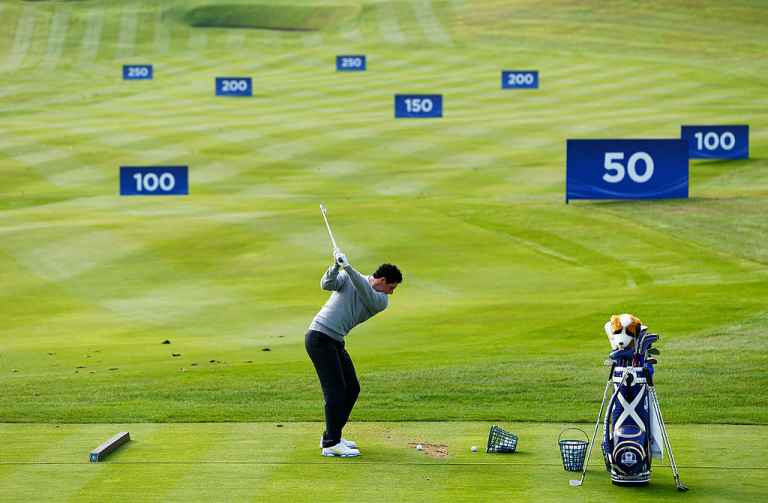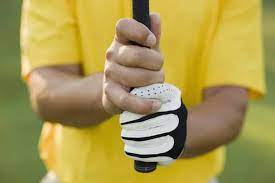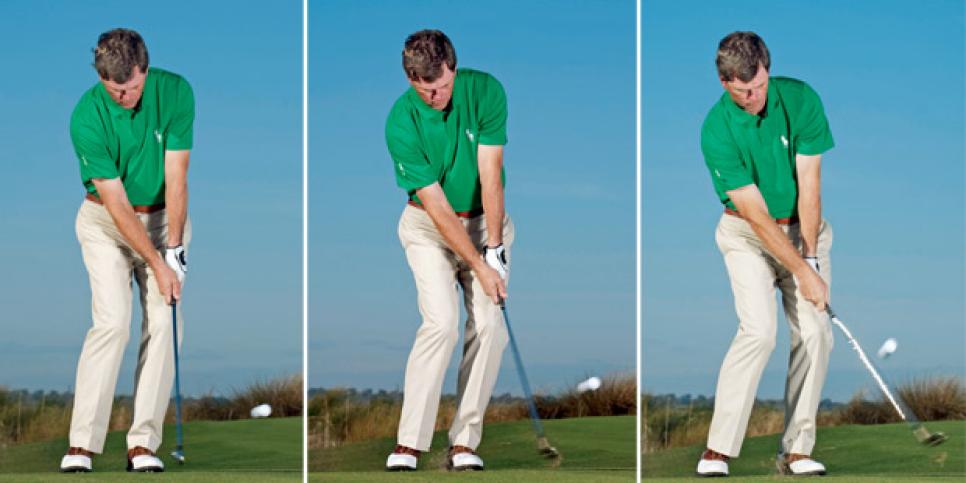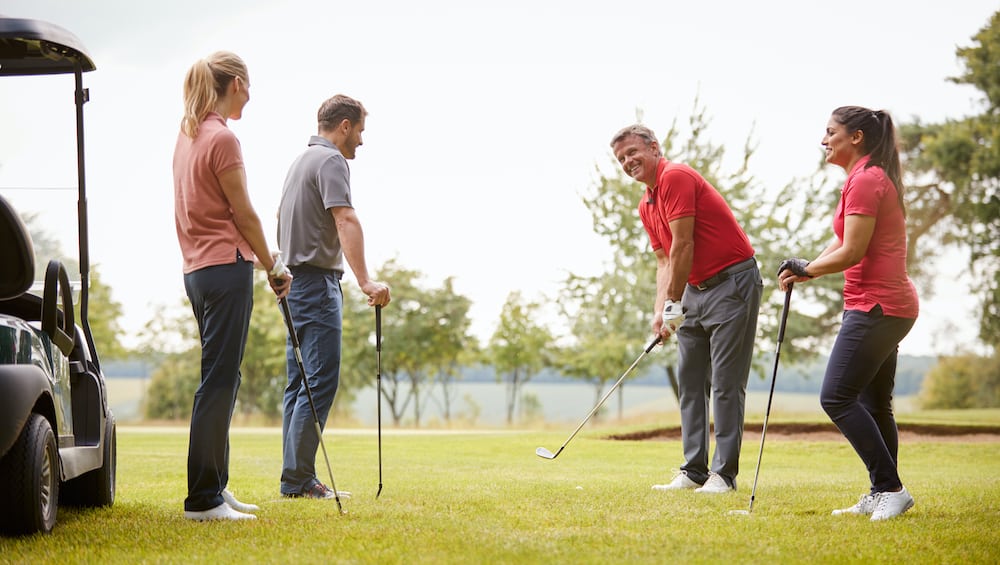Learning how to golf
Key Takeaways:
- Starting on the practice range is a great way to overcome the intimidation factor and build confidence as a beginner golfer.
- Working with a professional and focusing on proper grip, head follow through, and bending from the hips can help build a strong foundation in golf.
- Mastering the short game, by concentrating on it, playing with friends, and starting slowly with equipment, is essential for success in golf.
Introduction to Golf: Overcoming the Intimidation Factor
Overcoming the intimidation factor is key when it comes to learning how to golf. In this section, we’ll explore ways to tackle this challenge head-on. From starting on the practice range to understanding that everyone was once a beginner, we’ll equip you with the tools and mindset to conquer any apprehensions and dive into the world of golf with confidence. No need to fear, we’ve got you covered!
Starting on the Practice Range
For those just learning golf, starting on the practice range is key. It’s the perfect environment to focus on perfecting your swing, understanding the mechanics, and gaining confidence before heading to the course.

Here’s a 5-step guide for getting started:
- Warm up with stretching, light cardio, and swinging without hitting a ball.
- Work on your grip and head follow through. Take time to understand and adjust these fundamentals.
- Bend from your hips instead of your waist for better posture and power.
- Start with shorter clubs and progress to longer clubs. This helps you work on technique and build confidence.
- Set goals for each practice session. This helps track progress and stay motivated.
Unique Details:
Remember everyone was a beginner too! Don’t compare yourself to experienced players. Enjoy the journey.
Pro Tip:
Record yourself during practice sessions. This helps analyze swings, identify areas for improvement, and make adjustments with a pro.
Everyone was Once a Beginner
- Starting on the Practice Range:
Golf can be intimidating, especially for newbies. But remember, everyone had to start somewhere! Practicing on the range helps beginners gain confidence and become familiar with the basics. Swing practice and learning proper techniques can create a solid foundation in golf.
- Working with a Professional:
To conquer intimidation, working with a golf coach is a great way. They can give guidance about grip and head follow through, plus hip bending. These fundamentals are key to mastering the game and boosting confidence.
- Concentrating on the Short Game:
Many ignore the short game, yet it’s one of the most crucial aspects of golf. Chipping and putting practice can improve your performance. Learn and practice these skills with friends, so it’s more fun and you can progress at your own pace.
- Getting the Ball Airborne:
Moving from the practice range to the course can be scary. Mastering the skill of keeping the ball airborne helps build confidence in hitting longer shots, so newbies can feel comfortable on the course.
- Taking Care of the Course:
As you progress in golf, it’s important to take care of the course – repairing divots, fixing ball marks, and following etiquette rules. This shows respect for the game, and makes for a positive experience.
- Exploring Practice Ranges:
Practice ranges are great resources for learning golf. Before trying other forms of learning, beginners should take advantage of this option.
- Considering Coaching and Group Lessons:
Coaching sessions or group lessons offer personalized instruction and the chance to learn from others in a supportive environment.
- Understanding the Golf Swing and Equipment:
To make a good start in golf, it’s essential to understand the golf swing and different types of equipment. Learning about clubs, their uses, and different swings will help improve performance and enjoyment of the game.
- Emphasizing Practice and Enjoyment:
The best way to learn golf is through consistent practice and having fun. Celebrate small achievements and stay motivated by the joy of playing golf.
Using the resources and options mentioned above, beginners can overcome their fear of golf and have a great time improving.
Building a Strong Foundation in Golf
Building a strong foundation in golf sets the stage for success on the course. From working with a professional to perfecting your grip and head follow through, and learning the proper technique of bending from the hips, this section provides valuable insights to help you improve your game. With expert guidance and essential tips, you’ll be on your way to becoming a skilled golfer.
Also Read: Best Grips for Golf Clubs
Working with a Professional
Golfers can benefit from working with a professional. An instructor can give personalized tips about technique and form. Moreover, they can offer guidance about strategy, course management, and mental preparation. Furthermore, access to advanced technology and equipment can help assess performance. Ultimately, investing time with a qualified professional can help you become a skilled golfer.
Proper Grip and Head Follow Through
Golfers must master a proper grip and head follow through for a successful swing.

To get it right, follow these steps:
- Put hands on the club with a neutral grip.
- Place left hand (right-handed players) on the club first, with V-shape between thumb and index finger facing right shoulder.
- Wrap right hand (right-handed players) around the club, overlapping or interlocking with left hand.
- Keep a relaxed grip, no tension in hands or wrists.
- During the swing, keep a firm but not too tight hold on the club.
- When you finish the swing, ensure your head is balanced and still facing down the target line.
You’ll need practice to master this. Try different techniques until you find one that works. Keep practicing too – even when you’ve got it down – to maintain consistency and improve your game.
Bending from Hips
Bending from the hips is key for golf. It helps with proper swing mechanics and performance. Stand with feet shoulder-width apart. Bend forward at the hips, keeping your back straight and weight even. Knees should be slightly flexed. Engage core muscles. This supports your spine and prevents strain or injury.

It’s important not to slouch or round your back. With this technique, you’ll improve performance and increase success. Mastering the short game is like juggling chainsaws. It takes precision, focus, and no body parts!
Mastering the Short Game: The Key to Success
Mastering the short game is crucial in achieving success in golf. In this section, we will focus on the key aspects that lead to mastering the short game. From concentrating on the short game to learning with friends and starting slowly with equipment, we will explore effective strategies to level up your golfing skills. So, get ready to sharpen your techniques and enhance your precision in the most vital part of the game.
Concentrating on the Short Game
Golf’s short game requires intense focus and accuracy. It involves the art of putting, chipping, and pitching the ball to navigate the greens and get as close to the hole as possible. This aspect of the game needs special skill and strategy, plus mental strength.

- Having a consistent putting stroke is vital for this game. By focusing on the clubface alignment, controlling speed, and reading the green, players can improve their ability to hit those crucial putts.
- Chipping and pitching require precise control over distance, trajectory, and spin. Practicing different techniques and understanding how different clubs modify these factors helps players get shots close to the pin from many distances around the green.
- In order to concentrate on the short game, unnecessary risks must be avoided. Strategically plan each shot to minimize mistakes and maximize scoring chances.
- The short game also needs mental discipline. Players must stay calm and focus on executing each shot with precision and confidence. Visualization techniques can help performance under pressure.
- Lastly, repetition is important for honing one’s short game skills. Regular practice dedicated to putting, chipping, and pitching will boost confidence and consistency on the course.
By dedicating time and effort to the short game, golfers can improve their overall play.
Proper technique is also crucial for success in this area. Mastering shots around the green involves using clubs effectively while considering lie, slope, wind conditions, and ball placement. Adapting and adjusting their approach to these variables gives players an edge in scoring lower and improving their game.
John was having difficulty with his short game, controlling distance and accuracy around the greens. He sought help from a golf coach and worked on his putting, chipping, and pitching techniques. With focused practice and expert guidance, John saw marked improvement in his ability to make accurate shots from various positions.
His scores dropped, and he gained confidence in his short game. This success motivated him to keep honing his skills, leading to overall improvement in his golf game. John’s story shows the importance of concentrating on the short game and how seeking guidance from a professional can yield transformative results on the course.
Learning with friends: Friends don’t let friends slice alone.
Learning with Friends
Golfing with friends can be a fun and valuable way to develop your skills. Practice and play with peers to motivate one another and learn from each other’s experiences. This creates a supportive atmosphere where you can get constructive feedback.

Look at different techniques and strategies. Each friend could be good or bad at golf, giving you different perspectives. Through watching and talking, you can understand different playing styles and make your approach better.
Also, competing with friends helps you improve. Set goals like improving an aspect of your game or hitting certain scores. Friendly competition adds excitement to practice sessions and makes learning fun.
To get the most out of learning with friends, keep a positive atmosphere. Support each other’s progress and be respectful of each other’s abilities. Focus on constructive feedback, not mistakes. The goal is to improve and build strong relationships.
Being active in practice and games with friends makes it easier to learn. Understand others’ experiences, challenge each other, and foster positivity. These are the keys to successful learning with friends in golf.
Starting Slowly with Equipment
Start your golf journey slowly! Get familiar with the different clubs, like woods, irons, wedges, and putters. It’s best to begin with a few essential clubs to prevent feeling overwhelmed. Practice your grip on each club and find one that’s comfortable. Choose a golf ball that matches your skill level. Look into accessories like tees, gloves, and bags, based on your preferences.
As you gain confidence, gradually add more equipment. Also, don’t forget to seek guidance from pros or join group lessons for personalized instruction. Finally, keep persevering and celebrating successes. John, a golfer, did this, and today he enjoys playing golf. He advises beginners to take their time when starting with their equipment.
Transitioning to the Course: Essential Skills and Etiquette
Transitioning to the course requires mastering essential skills and etiquette to fully enjoy the game of golf. From getting the ball airborne to playing quickly, learning basic rules and etiquette, and marking the ball and joining groups, this section will equip you with the necessary knowledge to navigate the course with confidence and make the most of your golfing experience. Get ready to enhance your golfing skills and embrace the etiquette that makes this sport truly unique!
Getting the Ball Airborne
Understanding the correct technique and mechanics of golf shots is key for making the ball fly and for achieving distance and accuracy.

Here are the steps to do this:
- Stand with feet shoulder-width apart, knees bent, and weight evenly distributed.
- Aim the clubface at the target. Place the ball slightly forward in stance.
- Swing smoothly. Keep head still and eye the back of ball.
- As you swing, move weight from back foot to front foot. Keep grip relaxed. Rotate hips and turn through shot for power.
Consistent practice and repetition are important to get the ball airborne. This leads to better control over shots and more successful outcomes.
Throughout golf’s history, players have worked on getting the ball airborne. Thanks to modern technology and teaching methods, players now have access to tools that help them with this. From using golf clubs designed for higher launch angles to professional instruction, players continue to improve their ability to get the ball airborne.
Playing golf quickly is like trying to catch a cheetah on roller skates – but it’s good cardio!
Playing Quickly
Playing golf quickly is an important ability for all golfers. Quick play helps their own game and others’ experiences. To play quickly, move through the course efficiently and make decisions promptly.
Be prepared before your turn. Know your yardage, pick your club, and imagine your shot while you wait. Make a plan for each hole, considering wind and hazards.
Be decisive and confident. Don’t overthink or second-guess. Trust your instincts and commit to decisions. This will help you hit shots faster.
Practice good etiquette. Be ready, keep the right distance, and be considerate. Don’t search for lost balls or chat too much.
Focus on playing quickly. It creates a smoother pace and a better round for everyone. Learn basic rules and etiquette so you don’t look like you’re chasing birds!
Learning Basic Rules and Etiquette
It is essential to get acquainted with the unspoken rules of golf. This includes being quiet during swings and refraining from unnecessary distractions. Moreover, players must repair divots, rake bunkers, and not damage the course.

Knowing the basic rules of golf allows players to navigate the course correctly. This includes finding out-of-bounds areas, understanding penalty strokes, and following specific rules when encountering hazards.
Pace of play is also important in golf. Players must be efficient in their movements, keeping up with the group in front while playing promptly yet without rushing, so as to have a smooth flow on the course for all.
Good ethics and sportsmanship are key in golf. Honesty is valued within the sport, so it is vital not to move or improve an unfavorable lie or deliberately hide information about one’s score. Also, respect towards opponents by congratulating them on well-played shots helps maintain a positive atmosphere.
Recognizing that learning basic rules and etiquette is more than just knowing specific guidelines is worth noting. It involves embodying sportsmanship principles while enjoying a round of golf. Generating a culture where courtesy, respect, and fair play are esteemed increases the overall experience for everybody involved in this classic game.
Marking the Ball and Joining Groups
Marking the ball and joining groups are key to playing golf. This ensures fair play and proper etiquette, safeguarding the game’s integrity.
To mark a ball on the green, place a coin or ball marker directly behind the ball. Make sure it does not obstruct others’ putts. Carefully lift the ball off the green with your hand or putter, lifting it straight up. Use a towel or wet grass to clean the ball if needed. Align the ball’s markings with the marker or coin, then place it back onto the green.
When joining a group, introduce yourself. Wait for an appropriate moment, such as when they are in between shots or at a tee box. Follow proper golf course etiquette. Be quiet while others are preparing for and making shots. Avoid distractions. Repair divots or pitch marks made while playing.
The Continuous Journey: Improving and Enjoying the Game
As we continue our journey in learning how to golf, we will explore a section that focuses on improving and enjoying the game. Discover the importance of taking care of the course, involving juniors in a fun way, cherishing those good shots, and overcoming moments of discouragement. Join us as we navigate the path to becoming better golfers while finding joy in every step along the way.
Taking Care of the Course
Taking care of the course is key to preserving the beauty of a golf course, and requires various practices. These include:
- Mowing and watering fairways and greens
- Repairing divots or ball marks
- Inspecting and maintaining irrigation systems
- Trimming trees and bushes
- Using eco-friendly fertilizers and pesticides
Golfers should also show respect for the course by following etiquette guidelines such as:
- Replacing divots
- Raking bunkers
- Avoiding turf damage
This helps improve their own playing experience, as well as preserving the environment for others.
Moreover, golfers need to be mindful of their behavior on the course – keeping noise levels down, respecting other players, and practicing good sportsmanship. Golf clubs can help by providing educational programs and informational resources, and by emphasizing proper care through signage or pamphlets. This way, everyone can work together to create a positive atmosphere and fully appreciate the game of golf.
Involving Juniors in a Fun Way
Our goal is to promote the inclusion of young individuals in golf in an enjoyable way. We create a positive and exciting environment for junior golfers. We design activities and events that engage and entertain them. We want to foster a love for the game by making it interactive and fun.
We don’t only give juniors the chance to form connections, but also provide a supportive atmosphere for them to learn and grow. We prioritize their comfort and motivation.
Involving juniors in a fun way has benefits. It helps them develop social skills, teamwork, discipline, and perseverance. Games and challenges build their physical capabilities and enhance their mental acuity on the course.
We believe that when young players enjoy the game and form friendships, they are more likely to have a lifelong passion for golf. Even remembering the good shots can be a small victory.
At our organization, involving juniors in a fun way is a priority. We want to create an inclusive and enjoyable environment where they can develop their skills and form a love for the game.
Remembering the Good Shots
Reflecting on the good shots you make in golf is essential. Take the time to enjoy the feeling of a solid drive off the tee or a long putt. It reinforces positive memories and boosts your confidence. Visualizing these successful shots can enhance your mental resilience and ability to perform under pressure. Imagine yourself executing perfect swings and accurate putts for improved performance.
Embrace mistakes too. Analyze what went wrong and focus on how to improve. This reflects a growth mindset and makes you more resilient.
Maintain a positive attitude. No matter your performance, stay positive and enjoy the game. Remember the good shots to avoid negativity. This joy increases consistency and leads to better performance.
By remembering the good shots and using them to your advantage, you can cultivate confidence and mental resilience, elevating your game.
Overcoming Discouragement
Golf can be tough. Discouragement can easily set in. But remember: all golfers experience moments of frustration. To beat discouragement, have a positive attitude and keep learning.
Setbacks are part of the game. Don’t get frustrated and give up. Successful golfers see mistakes as learning experiences. They stay determined and focused.
Seek help from other golfers or a coach. Share stories and learn from each other. Get feedback tailored to you, and stay motivated.
Adopt a growth mindset. Persevere. Setbacks are part of learning. With dedication and positivity, success on the course is achievable.
Finding the Best Way to Learn Golf: Resources and Options
When it comes to learning how to golf, finding the best resources and options is key. In this section, we will explore different avenues for learning, including practice ranges, coaching and group lessons, as well as understanding the golf swing and equipment. The emphasis here lies in both practice and enjoyment, ensuring that you have a well-rounded approach to mastering this sport.
Exploring Practice Ranges
Practice ranges are essential for learning and boosting golf skills. They give a golfer the chance to try out different shots, become consistent, and practice particular areas of the game. Visiting practice ranges helps golfers learn different clubs, their trajectories, and how to refine their swing.
Starting on the practice range is especially important for beginners. It’s where they can create a strong golf base with professional help and learn correct grips and head follow through. It also allows them to get tips from experts on techniques for success.
Practice ranges help golfers become pros at the short game – which is often seen as the key to making it in golf. It’s there that they can practice with friends and learn the skills needed to succeed.
Practice ranges also help when transitioning from the range to the course. It teaches golfers how to get the ball airborne quickly and play fast. This helps them learn the skills necessary for gameplay, while also understanding rules and etiquette.
Exploring practice ranges has more benefits than just learning skills. It can help golfers become conscious of course etiquette and maintenance.
In conclusion, exploring practice ranges is vital for learning and improving in golf. It offers a way for beginners to establish a strong foundation, master the short game, transition to actual courses, and understand course maintenance. Embracing practice range experiences can lead to successful golfing.
Considering Coaching and Group Lessons
Coaching and group lessons are great for golfers wanting to up their game. Get individualized instruction from experienced coaches, tailored to your needs. Plus, the added benefit of group lessons: peer interaction! Learn from each other’s experiences in a supportive and collaborative environment.

Other benefits include:
- Expertise from Coaches: Learn invaluable techniques from their in-depth knowledge of the game. Identify areas for improvement and guidance on how to overcome challenges.
- Personalized Attention: One-on-one or small groups with dedicated instruction based on individual strengths and weaknesses.
- Peer Learning: Observe and learn from peers’ techniques and tactics. Get different perspectives on the game and grow together.
- Motivation and Support: Draw inspiration and push each other to improve in a group setting.
- Cost-Effective: Compared to private coaching, group lessons offer an affordable option with expert guidance.
Coaching sessions can be tailored to skill level or focus. From beginners to pros, you get the appropriate instruction for your current abilities or desired outcomes. Consider coaching and group lessons for the best golfing proficiency in a supportive setting.
Understanding the Golf Swing and Equipment
Players must understand the basics of the golf swing and equipment to truly excel. This includes grip, stance, posture, backswing, downswing, impact, and follow-through. With practice and study, muscle memory and technique can be developed.
Knowledge of clubs – drivers, woods, hybrids, irons, and putters – and their characteristics and purposes is necessary. Loft angle and shaft flex affect ball flight, and must be considered when selecting clubs.
Customization options such as club fitting help optimize equipment for individual swings. Through professional fittings or experimentation with different club specs, performance and limitations can be improved.
By understanding both swing mechanics and equipment nuances, golfers can unlock their potential. With this knowledge, areas of improvement can be identified, decisions made, and technique refined to achieve success.
Emphasizing Practice and Enjoyment
For beginners, regular practice is essential for honing skills and developing muscle memory. Repetition of different shots and scenarios builds confidence for tackling varied situations. Setting practice goals helps track progress and stay motivated.
Enjoyment is also important for staying committed and successful in the game. Golf offers a physical and mental challenge with the serenity of being outdoors. Navigate obstacles with resilience and a positive attitude towards successes and failures. Celebrate accomplishments to fuel enthusiasm for improvement.
Enhance practice experience with tools like video analysis and simulated games for feedback. Compete with friends or join leagues to make practice more engaging and enjoyable.
Embrace both practice and enjoyment to unlock potential and foster a lifelong passion for golf. Start practicing today for an amazing journey of self-improvement and fun!
Some Facts About Learning How to Golf:
- ✅ Golf can be intimidating for beginners, but everyone starts as a beginner. (Source: Team Research)
- ✅ Starting on a practice range can help beginners get acclimated to the game. (Source: Team Research)
- ✅ Learning golf requires a proper swing foundation, which can be achieved by working with a professional. (Source: Team Research)
- ✅ Concentrating on the short game before focusing on long irons and woods can lead to better overall performance. (Source: Team Research)
- ✅ Taking care of the course by ranking bunkers, replacing divots, and fixing ball marks is important for golf etiquette. (Source: Team Research)
FAQs about Learning How To Golf
1. How can I consistently hit solid shots in golf?
To consistently hit solid shots in golf, it is important to focus on hitting down on the ball. This means striking the ball with a descending blow rather than trying to scoop it into the air. Making sure your club strikes the ball before the ground will help you achieve better contact and more consistent shots.
2. Where can I learn how to play golf?
There are various places where you can learn how to play golf. Driving ranges are a great option to practice your swing and get comfortable with the game. Par 3 courses offer shorter holes and can be less intimidating for beginners. Local 9-hole pitch and putt courses provide a relaxed environment for you to hone your skills while still enjoying the game.
3. How do I hit a golf ball with long irons?
Hitting a golf ball with long irons requires proper technique and swing mechanics. It’s important to set up with the ball slightly forward in your stance and maintain a good balance throughout your swing. Focus on hitting down on the ball to achieve a descending strike. Practicing with long irons regularly will help you improve your consistency and distance with these clubs.
4. What should I bring to the driving range?
When visiting a driving range, it’s a good idea to bring a basket of balls, proper golf shoes for stability, and a comfortable outfit. It’s also helpful to have a towel to wipe your hands and clubs. Some driving ranges may provide rental sets of clubs if you don’t have your own equipment yet.
5. How can I learn from my mistakes while playing golf?
Learning from your mistakes is a crucial part of improving in golf. One simple thing to remember is to take a moment after each shot to reflect on what went well and what didn’t. Analyze your swing, club selection, and course management decisions. Be open to seeking advice from experienced players or taking lessons to understand where you can make improvements.
6. Why is golf considered a life-long game?
Golf is considered a life-long game because it not only teaches you about the technical aspects of the sport but also teaches valuable life lessons. It transcends generations and can be enjoyed at any point in life. The challenges and rewards of golf, both on and off the course, contribute to its status as an amazing game that can be enjoyed throughout a lifetime.





